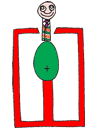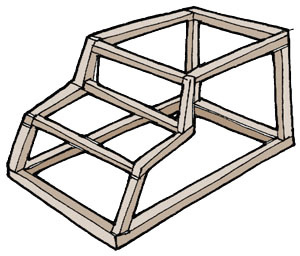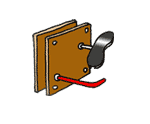Glossary
This glossary is based on the terms you will find in the National Curriculum Orders for Design & Technology or Information Technology in the Nuffield Primary D&T materials or in a range of other currently available texts / catalogues / websites.
A B C D E F G H I J K L M N O P Q R S T U V W XYZ
CAD
computer aided design; the designer uses the computer to help with the production of the design 'on screen' instead of developing the design by drawing on paper or making 3D models

cam
a non circular wheel that rotates and moves a follower. It converts the rotary movement of the cam into reciprocating or oscillating movement of the follower. Sometimes a circular wheel mounted off-centre onto a shaft is used as a cam, see eccentric
centre finder
a device used to mark the centre of a circle
characteristics of a material
the physical properties of a particular material; e.g. its hardness, strength and stiffness
charactistics of material
the physical properties of a particular material; e.g. its hardness, strength and stiffness

chassis
the frame of a vehicle
chooser chart
a chart showing information useful in making design decisions. Each chart presents information about a particular area of design and technology in a way that allows users to see which parts might be useful in their design.
circle cutter
a useful tool which can cut a circle from paper or card; should be used under supervision
circuit
an arrangement of components that provides a continuous pathway through which an electric current can flow
classroom management
ways of organising the resources, pupils and helpers in your classroom so that teaching and learning can proceed in an efficient and safe manner.
client
a person using the services of a designer. In the primary school the client is likely to be the person who is going to use the final product but in the world outside school the client is often a manufacturer and it is their customers who use the final product

clockwork motor
a component that provides rotary movement when it has been wound up. The energy source is an internal spring. Winding up stores energy in the spring. This energy is released slowly to make the shaft of the motor rotate
collections
a set of products you can use to illustrate ideas and principles in D&T. A set of simple tools used in the kitchen is a good starting point. There is a tutorial on collections.
component
the name given to one of the parts that make up a product
construction kit
a set of parts that can be assembled into a variety of working models which can then be taken to pieces e.g. Lego, K'nex, Meccano.
consumable materials
materials used to make products e.g. paper, card, wooden strip, plastic sheet, metal rod. These materials get used up and have to be replaced if pupils are to continue designing and making.
consumer
anyone who purchases goods or services
control
the name given to that part of design and technology concerned with the way mechanical, electrical and electronic devices work; hence control technology.
cookery aprons
protective clothing worn by pupils during work with food
corrugated plastic
a form of sheet plastic that is light yet strong and stiff; very useful for simple constructional work as it can be easily cut with scissors or a craft knife
craft knife
a sharp single bladed knife used to cut paper, stiff card and sheet plastic; should only be used by older pupils under close supervision
criteria for success
the principles or standards by which a design is judged
cultural variations
differences in what people believe, the sorts of things they like and dislike, the products they design and make, the way they behave and dress depending on their culture. For example the patterns of lines in Celtic knot work is distinct in appearance.

cutaway view
a drawing that shows the construction and internal detail of an object by showing the outer parts 'cut away'
